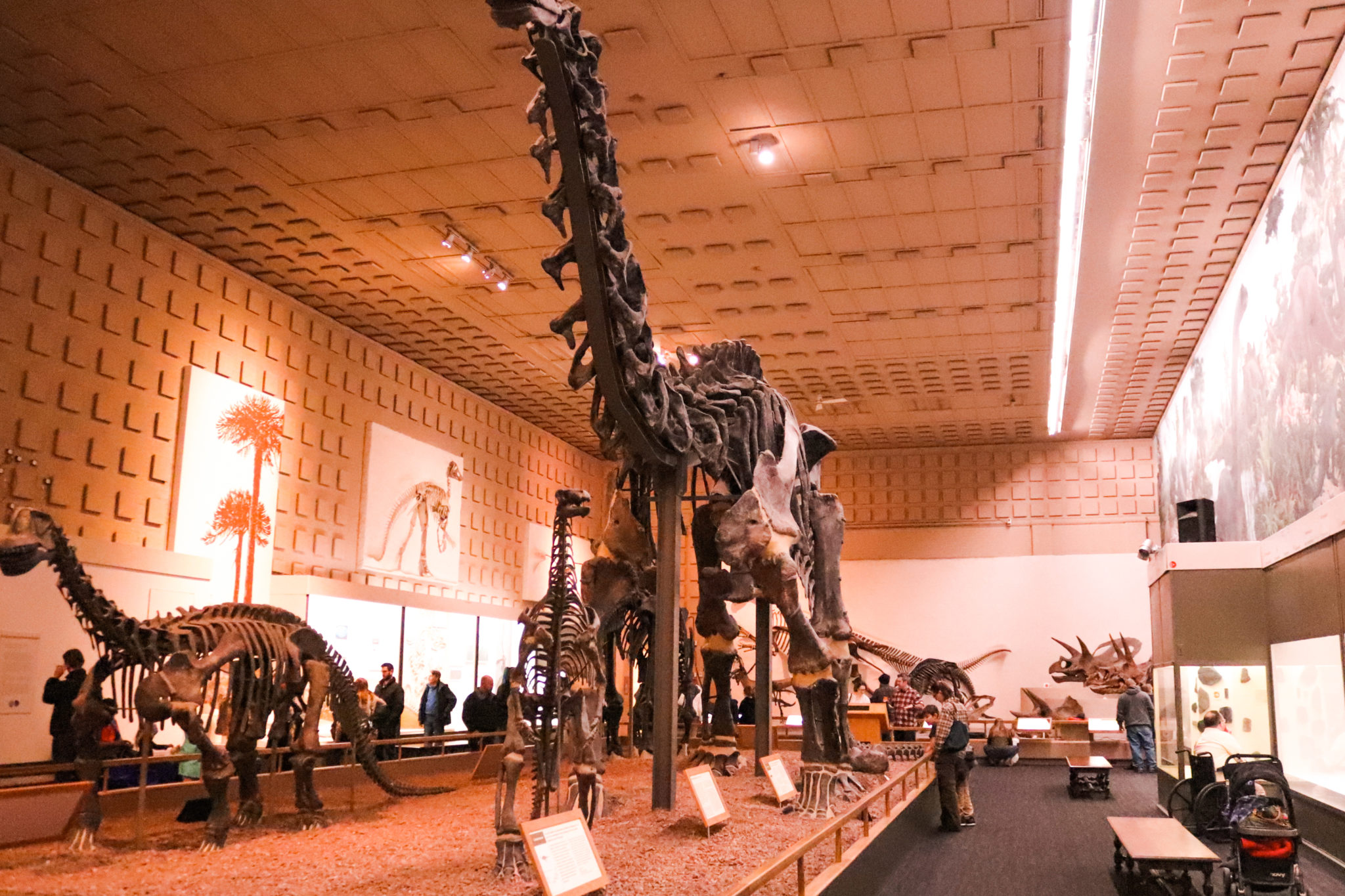
Marisa Peryer
The Great Hall of Yale’s Peabody Museum of Natural History houses the remains of fossilized dinosaur bones.
Most of the bones on display — from an expansive brontosaurus to a spiked stegosaurus — were unearthed in part by Othniel Charles Marsh, class of 1860. Described as a “mover and a shaker” by Peabody Director David Skelly, Marsh played a pivotal role in advancing vertebrate paleontology, despite his propensity for debauchery.
The nephew of George Peabody — a wealthy banker and the namesake of both Yale’s and Harvard’s natural history museums — Marsh was an avid outdoorsman with roots in New England, according to Peabody vertebrate paleontology curator Jacques Gauthier.
After graduating from Yale, Marsh looked to develop his interest in paleontology and left for Europe to study with the noted evolutionists of the day. When he returned to the United States, Yale named Marsh its first paleontologist, and he later went on to become president of the National Academy of Sciences between 1883 and 1895, according to the Peabody’s website.
As Marsh continued to develop his professional paleontology profile, his widespread resources and professional connections sped up the fossil-finding process.
Among Marsh’s growing set of connections was Edward Drinker Cope, the only other leading American paleontologist at the time. At first, the two scientists maintained a cordial relationship. Cope even volunteered to show Marsh a quarry in New Jersey where Cope had found numerous fossils.
But promptly after, Marsh bought the quarry and swindled the hotspot from under Cope’s feet.
“Cope didn’t think that was the coolest thing,” Gauthier said.
While the quarry purchase was a private violation of Marsh’s and Cope’s once amicable relationship, it wasn’t until Marsh publicly embarrassed Cope that the tension between the two hit a fever pitch.
At one quarry, Cope came across a jumble of marine-reptile bones, which would later become known as the long-necked Plesiosauria. But when he went to assemble the remains and publish his work, he made a fatal error: Cope attached the head of the plesiosaur to its tail.
Cope frantically tried to halt publication of his mistake. But meanwhile, Marsh wielded his money and influence to purchase copies of the publication and then distributed his foe’s error widely.
Spats between the two paleontologists escalated.
“Camps were raided, fossils stolen, collection sites dynamited, and telegraph operators bribed to get an edge in the Bone War,” Gauthier wrote in an email to the News.
Though their rivalry “eventually ruined both men,” Gauthier said, Marsh and Cope’s battles for paleontological dominance pushed their field forward. Over the course of their careers, the two boosted the number of known dinosaur species from single digits to dozens and “assembled an irreplaceable international resource composed of more than 25,000 new fossils,” according to Gauthier.
Soon, Skelly said, Yale will honor its mover and shaker with a 500-seat namesake lecture hall as part of the forthcoming Yale Science Building.
Outside the lecture hall will be an exhibition dedicated to Marsh. Along with two dinosaur skulls, the lobby display will also include a dinosaur trackway and casts of two Cretaceous-era species that Marsh discovered — Xiphactinus, a 12-foot-long predatory fish, and Hesperornis, a toothed bird. The bird, Skelly said, was regarded by Charles Darwin as one of the most important pieces of evidence for evolution.
“This space will honor his legacy as one of the very important early scientists at Yale,” Skelly said. “So it’s very appropriate that he is going to be honored in Yale’s newest science building.”
Marisa Peryer | marisa.peryer@yale.edu .







